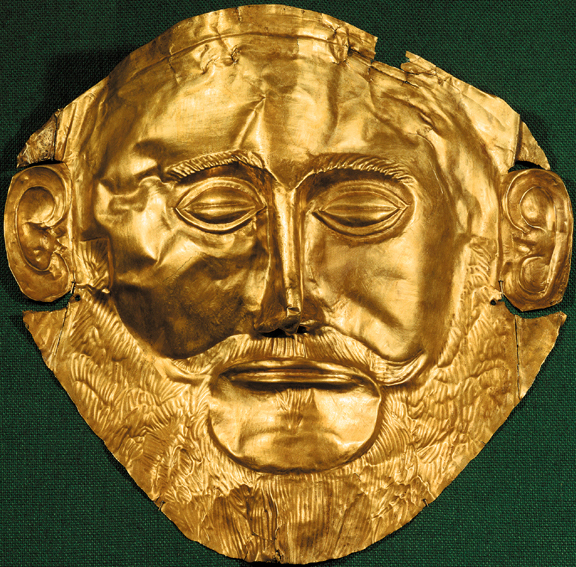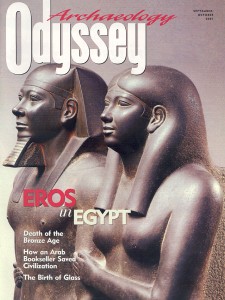City by City: Death of the Bronze Age
Sidebar to: When Civilization Collapsed

Described by Homer as a “strong-founded citadel” that was “rich in gold,” Mycenae was the greatest of the Mycenaean cities that flourished in mainland Greece from about 1600 to 1200 B.C. (In the Trojan War, Mycenae’s king, Agamemnon, is the king of kings who leads the Greeks into battle.) Around 1500 B.C. Mycenaeans conquered the island of Crete and adapted the Minoan script, called Linear A, to write their own language, an ancient form of Greek. This new script, called Linear B, was used solely for recording inventories and commercial transactions; hundreds of Linear B tablets have been found both on Crete and in such Mycenaean cities as Tiryns, Pylos and Mycenae itself. When Heinrich Schliemann excavated Mycenae in the 1870s, he uncovered royal shaft graves filled with extraordinary gold artifacts (such as the famous Mask of Agamemnon, shown at right). All of the Mycenaean cities were destroyed toward the end of the 13th century B.C. or the beginning of the 12th century B.C.
Already a library member? Log in here.
Institution user? Log in with your IP address.

